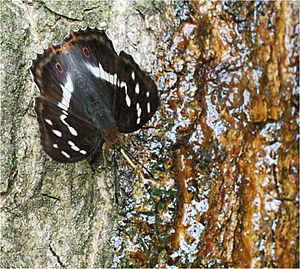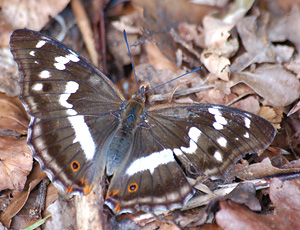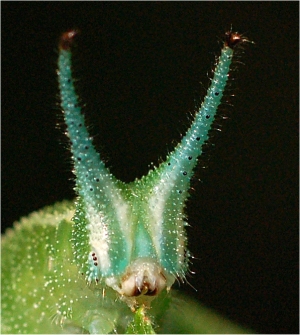
| Also Called"Sherif Longhorn" | |
| Christian Kock og Jens Stolt | |
 |
|
| Pinseskoven, Vestamager, DK. 19. juni 2006, feeding on Salix cineria hybrid. | |
| Caterpillar in resting position. | |
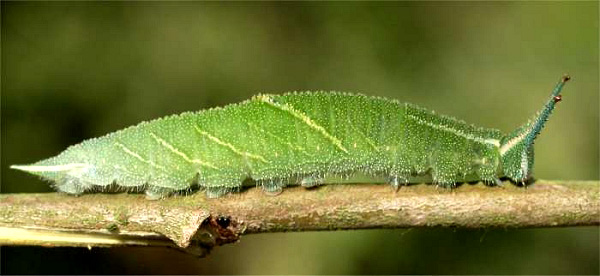 |
||||||||
|
Sideview of larva on salix branch. |
||||||||
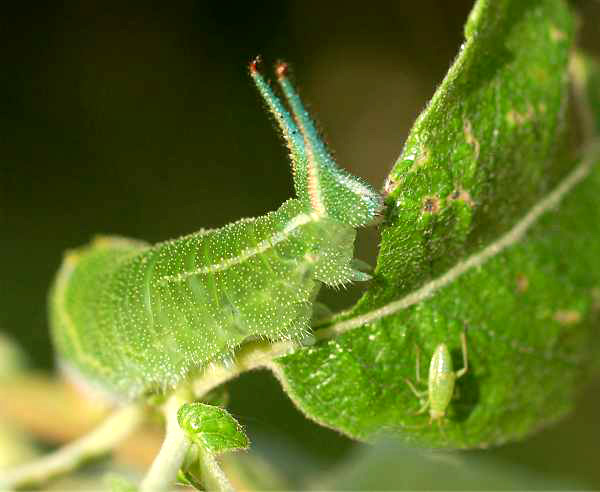 |
||||||||
|
Caterpillar eating Salix cineria.
Small Hemiptera nymph in front.
|
||||||||
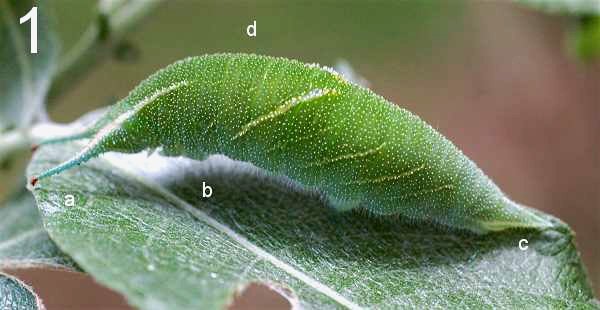 |
||||||||
|
Camouflage colours and behavior
on leaf of sallow. .
|
||||||||
|
Picture 1 The Apatura iris caterpillar can display aggressive as well as
inconspicuous behaviour. When it is disturbed by vibrations in
the branches it immediately stiffens and presses its head and
horns to the leaf's surface to resemble a leaf. B: When the caterpillar is resting on the leaf it bends the horns down and touches the leaf with the tip while it raises the first part of the body. This behaviour makes light shine under the caterpillar and makes it resemble a hanging leaf. A: Two horns means that no matter which angel the caterpillar
is viewed from, it will always present a "stalk". The
horns are darker on the ventral side that leans towards the leaf.
This gives the impression of a round shape, a stalk. D: The green body of the caterpillar is darker on the dorsal side. This means counter shadow, like in many mammals, and makes the body appear flat like a leaf. C: The rear of the caterpillar resembles the tip of a
sallow leaf very well |
||||||||
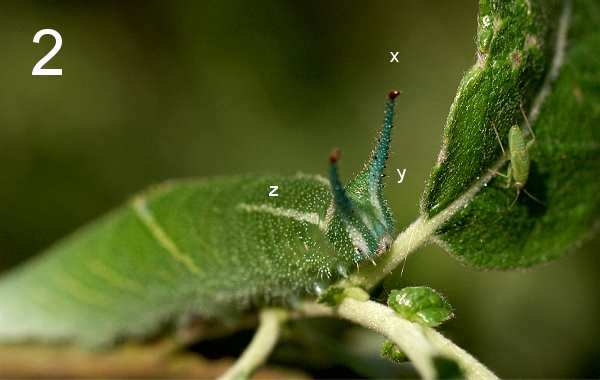 |
||||||||
|
Caterpillar displaying threathening
behavior towards Hemiptera nymph.
|
||||||||
|
Picture 2 A frontal view on the Apatura iris caterpillar shows us some
different features: X: The end of the horn is redish and bend forward, to mimicry a snails eye, I suppose. Z: Light grey stripes on the back protrude from the horns and accentuates them from a frontal view. The Apatura iris caterpillar is rather energic when moving around, it moves fast and like imago it also appears to be aggressive. It confronts small creatures in the vegetation and use the horns to "bully" them. |
||||||||
|
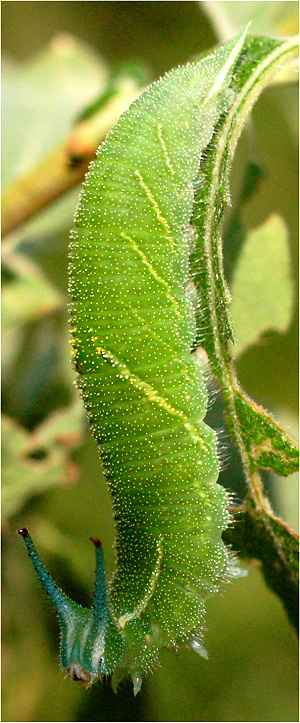 |
|||||||
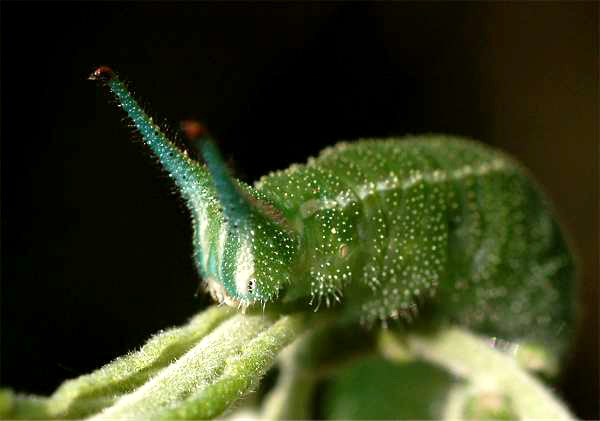 |
||||||||
| Frontal view of horns. Note colour at end. | ||||||||
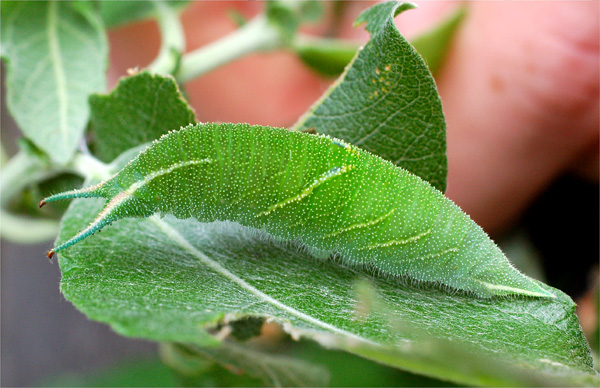 |
||||||||
| Camouflage behavior. Note woven silk on leaf. | ||||||||
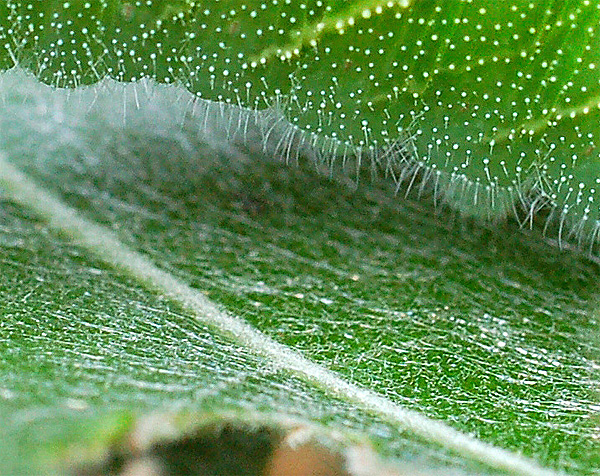 |
||||||||
| Close up of silk on leaf. | ||||||||
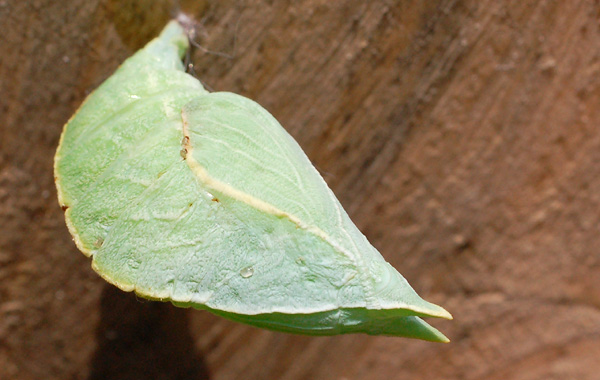 |
||||||||
| Chrysalis of Purple Emperor | ||||||||
